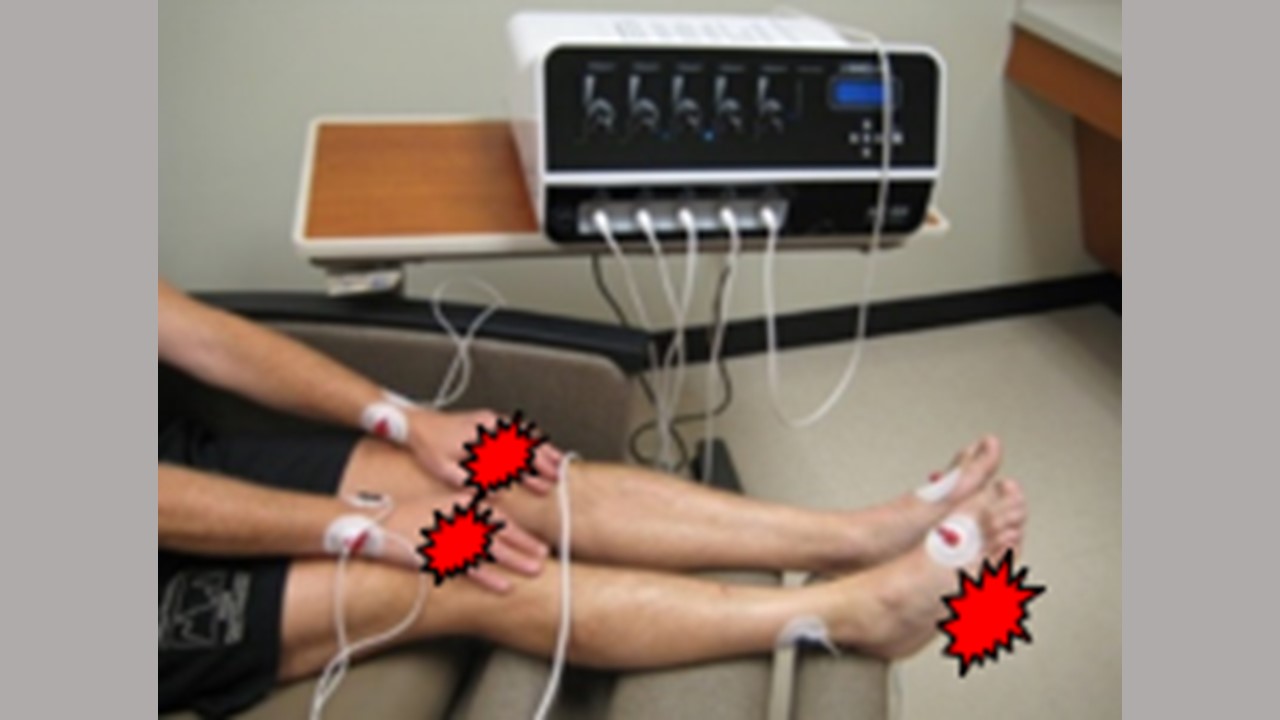Scrambler Therapy May Offer Lasting Relief for Chronic Pain, Review Paper Suggests
07/31/2023

A new review paper co-authored by two Johns Hopkins pain experts suggests that scrambler therapy, a noninvasive pain treatment, can yield significant relief for approximately 80%–90% of patients with chronic pain, and it may be more effective than another noninvasive therapy: transcutaneous electrical nerve stimulation (TENS). The write-up was published online July 13 in The New England Journal of Medicine.
Scrambler therapy, approved by the U.S. Food and Drug Administration in 2009, administers electrical stimulation through the skin via electrodes placed in areas of the body above and below where chronic pain is felt. The goal is to capture the nerve endings and replace signals from the area experiencing pain with signals coming from adjacent areas experiencing no pain, thereby “scrambling” the pain signals sent to the brain, explains the study’s primary author, Thomas Smith, M.D., the Harry J. Duffey Family Professor of Palliative Medicine at the Johns Hopkins Kimmel Cancer Center and a professor of oncology and medicine at the Johns Hopkins University School of Medicine.
All chronic pain and almost all nerve and neuropathic pain result from two things: pain impulses coming from damaged nerves that send a constant barrage up to pain centers in the brain, and the failure of inhibitory cells to block those impulses and prevent them from becoming chronic, says Smith, who also is the director of palliative medicine for Johns Hopkins Medicine.
“If you can block the ascending pain impulses and enhance the inhibitory system, you can potentially reset the brain so it doesn’t feel chronic pain nearly as badly,” Smith says. “It’s like pressing Control-Alt-Delete about a billion times.”
Many patients “get really substantial relief that can often be permanent,” he says. They receive from three to 12 half-hour sessions.
As a physician who treats chronic pain, Smith says, “Scrambler therapy is the most exciting development I have seen in years — it’s effective, it’s noninvasive, it reduces opioid use substantially and it can be permanent.”
TENS therapy also administers low-intensity electrical signals through the skin, but it uses a pair of electrodes at the sites of pain. Pain relief often disappears when or soon after the electrical impulses are turned off, Smith says. A study cited in the review paper evaluated the impact of TENS in 381 randomized clinical trials, and the authors found a nonstatistically significant difference in pain relief between TENS and a placebo procedure.
Smith and co-author Eric Jyun-Han Wang, M.D., program director of the Johns Hopkins pain medicine fellowship and an assistant professor of anesthesiology and critical care medicine at Johns Hopkins, are available for comment. To schedule an interview, contact Valerie Mehl or Amy Mone.